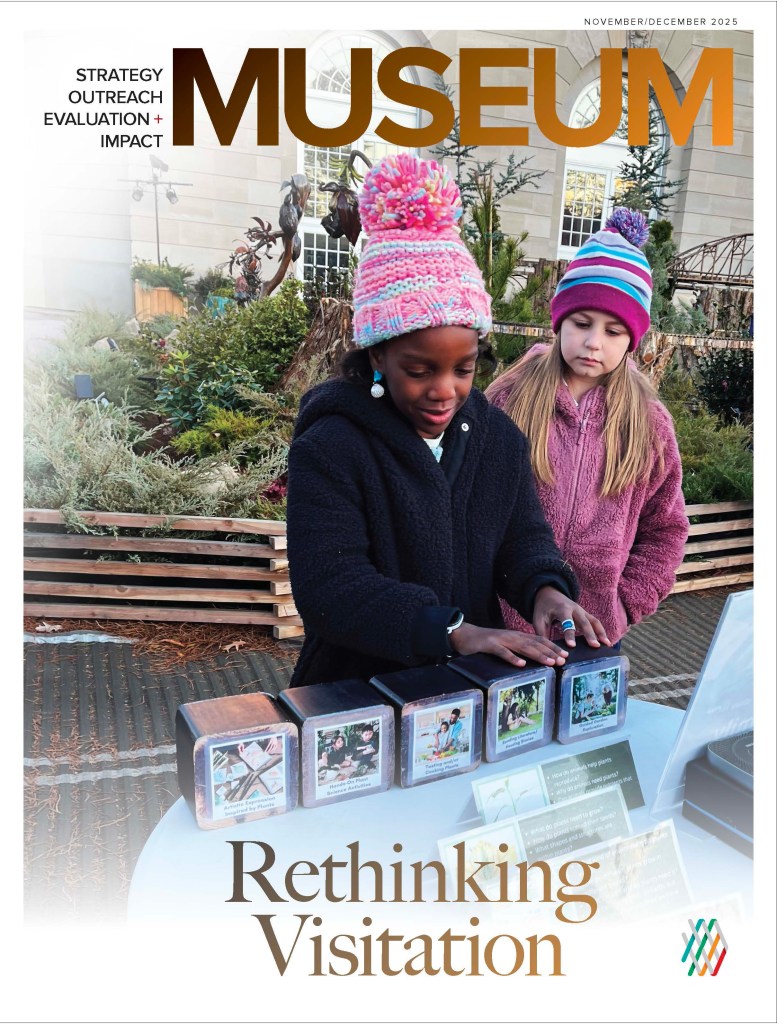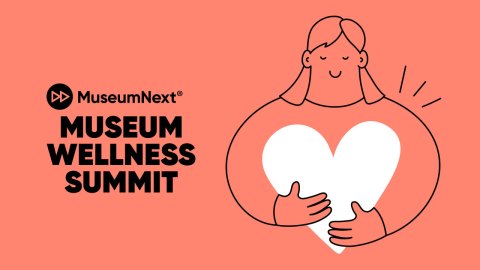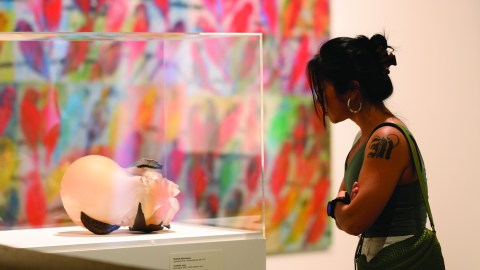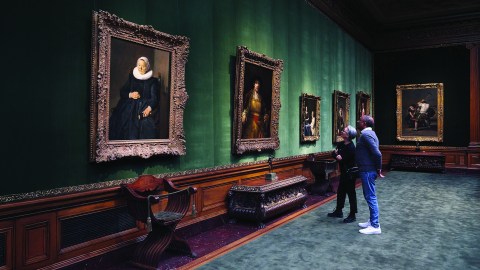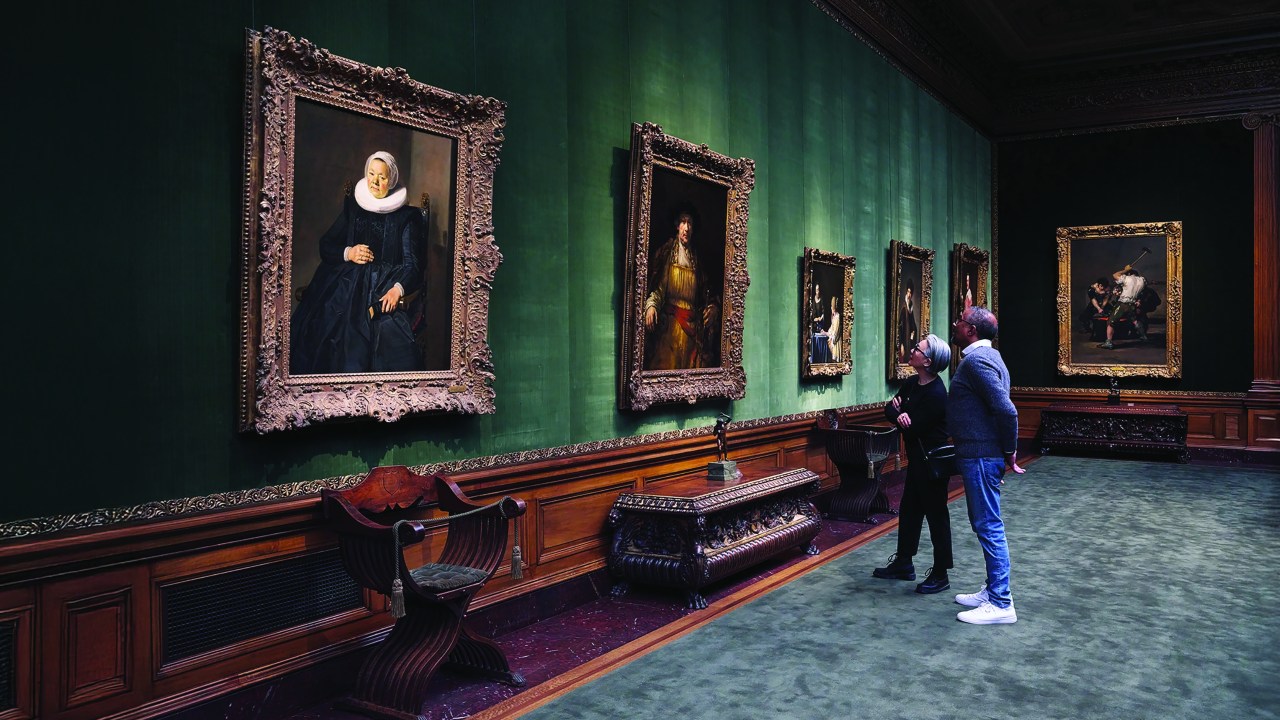
As part of an extensive renovation, The Frick Collection reimagined the visitor experience.
When The Frick Collection reopened its historic Fifth Avenue mansion in spring 2025 after a comprehensive, five-year renovation, the moment marked more than the unveiling of restored galleries, new education spaces, enhanced visitor amenities, and accessible spaces. It also signaled a cultural transformation in how the museum welcomes, serves, and connects with visitors.
This article originally appeared in the Nov/Dec 2025 issue of Museum magazine, a benefit of AAM membership.
» Read Museum.
What began as an initiative to transform the visitor experience in the new building evolved into something more transformative: a catalyst for cross-departmental collaboration, a tool for empowering staff across roles, and a unifying framework for organizational change. It became a way to define and operationalize what it truly means to be visitor-centered, not just in how we serve the public but in how we work together internally.
This is the story of how we (the Frick’s Marketing and Visitor Experience team and two external museum consultants) partnered to design a visitor experience framework rooted in the museum’s brand and mission. The end result was not a one-off training but a scalable, sustainable approach to culture change that other museums, regardless of size or resources, can adapt.
How We Began
The impetus to reimagine the visitor experience at the Frick first took root in early 2024 when the Frick reorganized and integrated Visitor Services into the External Affairs department under Marketing. This reorganization enabled staff to approach the overall visitor journey in a more holistic way—from start to finish—for the first time.
Leaders from the Frick’s Marketing and Visitor Experience team knew that other institutions had applied the learnings from hospitality trainings to their frontline programs. They spent several months visiting these cultural organizations and conducting informational interviews with colleagues across the country. Following this work, two senior members of the Frick’s Marketing and Visitor Experience team attended a well-known corporate hospitality and entertainment company’s quality service training program, which would become the basis for everything that followed.
The takeaway from the course was that by understanding visitors’ needs and putting the right guidelines and service standards in place, organizations can create a visitor-centered approach that empowers staff, unifies processes, and delivers consistently outstanding experiences that encourage guests to return and share their experiences with others. The team began adapting these customer experience strategies for a museum setting, but in a way that felt authentic and true to the Frick.
With the renovation underway and reopening on the horizon, the timing was right to put the program into motion. As a first step, the Frick team introduced the course material to leadership and key internal stakeholders, facilitating several workshops focused on foundational elements, such as developing service values and behaviors and operationalizing service recovery processes. The Frick adapted these foundational elements to align with the institution’s mission, brand work, and cross-departmental goals.
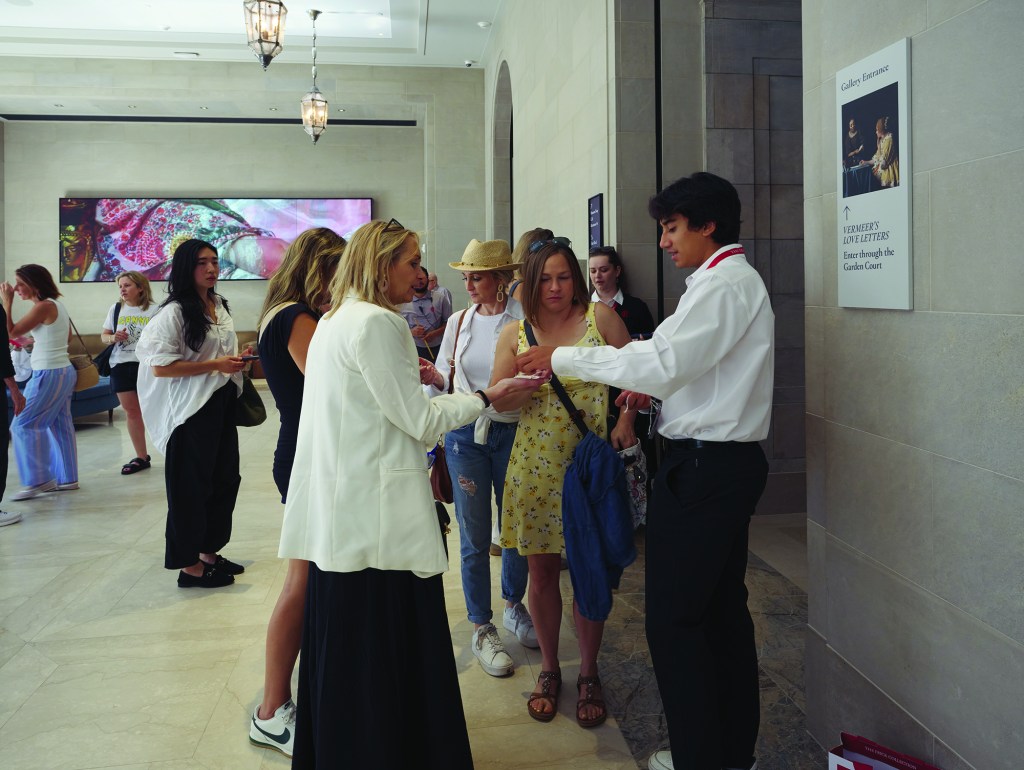
After starting the work internally, the Marketing and Visitor Experience team brought in external consultants (the two co-authors of this article) to co-design and build the new visitor-centered training program, allowing internal stakeholders to shape the content while leveraging the consultants’ facilitation skills to build out the program and train frontline teams. Together, over a six-month period, we led a collaborative design process focused on shaping a world-class visitor experience. This process reflected the institution’s brand and values while empowering staff to serve visitors with confidence and care.
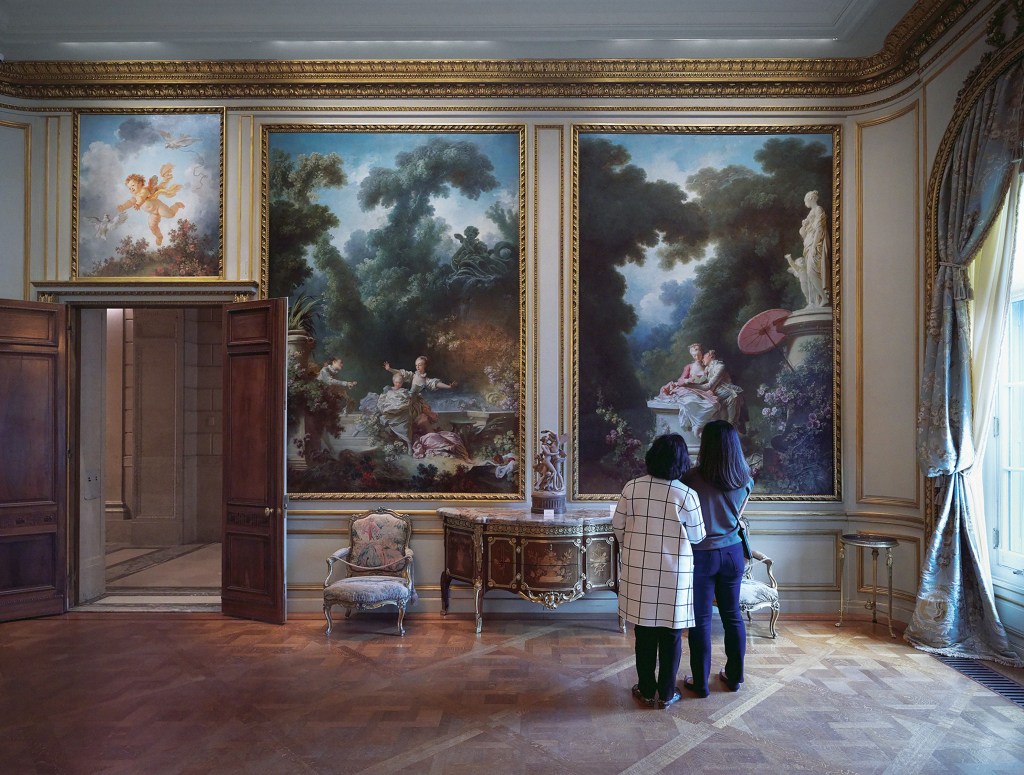
Developing Our Framework
To develop a framework and approach to reimaging the visitor experience, we conceptualized the work into three overlapping phases: discovery, co-design, and application.
Discovery: Listening and Learning
We began by conducting internal stakeholder interviews, analyzing past visitor feedback, and reviewing lessons learned from Frick Madison, the museum and library’s temporary home (2021–2024) during renovations.
Co-Design: Creating the Framework Together
We facilitated a workshop with cross-departmental stakeholders to: 1) clarify how the brand, tone, voice, and institutional personality inform the visitor experience; and 2) co-create our new visitor experience framework. We adapted the following components of the hospitality company’s quality service training framework into our work:
- A common purpose statement. We developed a concise expression of what the Frick offers from the visitor’s point of view. This common goal unites the museum staff. The Frick’s common purpose is, “We inspire wonder and connection by creating welcoming spaces that encourage exploration.”
- Five service values and behaviors. These principles inform and guide every interaction that staff have with visitors, ensuring a consistent and exceptional experience. The Frick’s service values are: belonging, respect, inform, connection, and helpfulness. The values were then paired with concrete, observable service behaviors that guide staff actions. The Frick’s service behaviors are specific “I” statements, such as, “I actively listen and respond to all visitor needs” and “I approach each encounter as a fresh experience.”
We knew the language for both had to feel authentic. Instead of jargon or hospitality clichés, we worked with staff to craft clear language that resonated with the museum’s brand, personality, and mission. We were building a shared vocabulary that staff could see themselves in and then use in daily practice.
We followed this work with a visitor journey mapping exercise with a wider group of cross-departmental stakeholders. Journey mapping is a tool that helps organizations step into the shoes of their users and identify both positive moments and areas of friction. In this case, we chose four different audience archetypes: “core Frick fans,” “art enthusiasts,” “tourists,” and “emerging and next gen.” Staff identified pain points, high-impact moments, and service gaps by imagining the visit from these visitors’ perspectives. Staff also worked together to visualize the entire visitor experience—from pre-visit to arrival to post-visit.
This exercise surfaced more than logistical and operational issues. It sparked meaningful dialogue. By exploring the experience together, staff built a shared and holistic understanding of their collective role in shaping how visitors feel, navigate, and make memories in the museum.
Application: Bringing It to Life
With the framework complete, we turned our focus to application. We designed a one-day, in-person customer service training and delivered the same session five times, ensuring that nearly 130 visitor-facing staff across departments could participate.
These were not lecture-style training sessions. They were participatory, hands-on workshops built around real visitor scenarios, peer learning, and practical skills. Our aim was to go beyond theory and build muscle memory.
We focused on mindsets: the internal habits of thought that shape external behavior. If service values define what we aim to do, mindsets describe how we go about doing it. We taught four core mindsets:
- Active listening and presence: Focused attention creates trust. We practiced slowing down, tuning in, and reflecting what we heard, even under stress.
- Curiosity and open-mindedness: Every visitor is different. This mindset encouraged staff to stay receptive, ask questions, and challenge assumptions.
- “Yes, and” thinking: Borrowed from improvisational theater, this mindset helps staff build on a visitor’s request, even when they can’t fulfill it exactly as asked. It shifts “we can’t” into “here’s what we can do.”
- Co-creation and collaboration: Visitors are not problems to solve. They’re people to partner with. This mindset fosters shared ownership and empathy, especially in challenging moments.
Staff practiced applying these mindsets to real-world scenarios, such as a tourist arriving just before closing or a visitor upset about bag-check policies. We also introduced service recovery strategies drawn from the initial hospitality program: practical techniques like apologizing with empathy, solving problems on the spot, and expressing appreciation. The principle was simple: even if it’s not our fault, it’s still our responsibility to make things right.
Finally, to make sure that all these learnings would be sustainable, we developed a Visitor Experience Handbook that summarized everything. The Handbook not only captures the framework, it signals that visitor experience is now a living, evolving practice embedded in the museum’s culture.
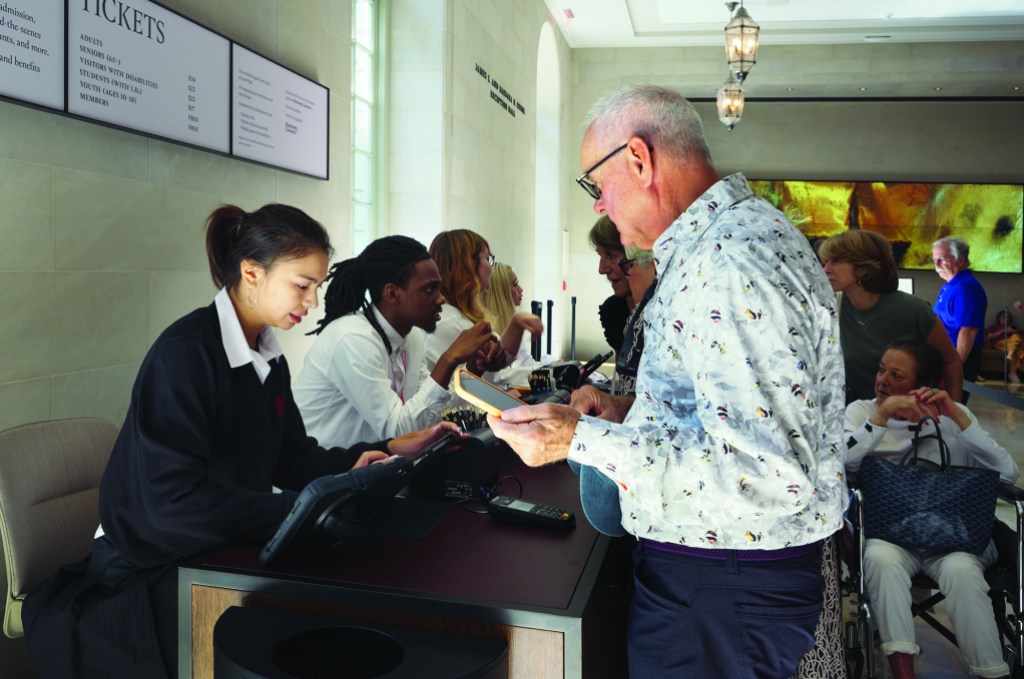
What We’ve Learned So Far
During our co-design phase, we quickly realized that this work wasn’t just about serving visitors. It was about reshaping how museum staff work together, how they support each other, and how they bring the museum’s values to life. The training sessions became more than skill-building; they became spaces for reflection, recognition, and connection across departments.
Through this work, we have seen staff who previously rarely interacted begin problem-solving together. Supervisors have learned new ways to coach and support their teams. The framework has also made the emotional and cognitive effort required of frontline staff visible. Because the Service Values and Behaviors are applied across roles, it has helped staff see themselves not just as workers in separate departments but as contributors to a shared visitor experience.
Now, a few months into reopening, we are starting to see some of the impact of this work. For example, staff are using a shared language to talk about customer service, supervisors are recognizing moments of service excellence, and new hires are onboarding into a clearly articulated, visitor-centered culture.
While the visitor-facing effects of our work are becoming visible, the internal impact has been just as meaningful. Staff have reported feeling more connected, respected, and empowered since the trainings. As one participant shared, the experience “humanized everything,” bringing clarity to expectations while validating the complexity of frontline work.
Again, this work wasn’t just about serving visitors. It was also about reshaping how staff work together, support each other, and bring the museum’s values to life. As a museum, we’re still in a learning mindset. We’re updating the Visitor Experience Handbook as new learnings emerge and using the framework to onboard new hires. We’re also exploring new ways to capture visitor stories and feedback—not just complaints—and turn them into meaningful data to further enhance the visitor experience.
Ultimately, this wasn’t just a training initiative. It was a starting point for cultural transformation that is reshaping how we work, how we lead, and how we connect with visitors and each other. By grounding everyday actions in shared values and purpose, we’re building a more aligned, collaborative, and visitor-centered organization.
Six Ways to Reimagine Your Visitor Experience
- Start with your mission and voice. Your visitor experience should feel like an extension of who you are. Use your institutional values and tone as the foundation.
- Create a common purpose. Craft a short, unifying statement that expresses why your institution exists from the visitor’s perspective. It should be energizing and memorable enough for all staff to easily recall.
- Co-create with staff; don’t dictate. Invite staff to shape your service values and behaviors. When staff help define principles, they take ownership and pride in living them.
- Make the work real and specific. Pair each value with clear, actionable “I” statements that staff can follow to embody the service values. For example: “I go above and beyond to exceed expectations.”
- Connect the dots across departments. Build opportunities for cross-departmental collaboration. A visitor-centered culture is only possible when internal silos give way to shared responsibility.
- Train for mindset, not just procedure. Focus on mindsets like curiosity, presence, and collaboration, not just rules or policies. These shape how people respond under pressure and foster consistency.
Alexis Light is Associate Director of Marketing and Visitor Experience at The Frick Collection in New York City.
Dana Mitroff Silvers is Principal + Founder of Designing Insights LLC.
Carolyn Royston is Chief Strategic Development & Partnerships Officer at Surface Impression.
